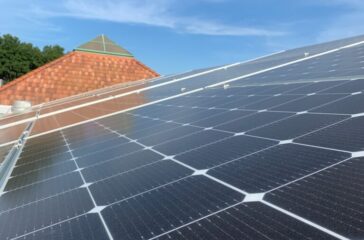Solar power helping health care facilities gain climate resilience
By Pam Strayer
It is not easy to rattle Rosa Vivian Fernandez. As the CEO of a California healthcare clinic that primarily serves a low-income, largely Hispanic community, Fernandez sees the harsh struggles faced by disadvantaged populations on a daily basis. But when she traveled to Puerto Rico in 2017 to visit extended family members, Fernandez was shocked to see how deeply Hurricane Maria had devastated the island infrastructure, including the ability of healthcare providers to serve people in need.
More than 5,000 people died due to the violent Atlantic storm, which caused an estimated $92 billion in property damages, wiping out the electrical grid.
“All the healthcare centers–the ones that did not get flooded or destroyed by the storm–went down,” she said. “People died from the lack of services.”
Power to a children’s hospital in San Juan was restored when Tesla deployed its own solar panels and batteries after the 2017 hurricane, setting them up in the hospital parking lot. But this week most of Puerto Rico was again without power in the wake of yet another hurricane, forcing a cancer hospital on the island to relocate its patients when a backup generator failed.
After her 2017 visit, Fernandez realized the clinic she heads, San Benito Health Foundation in Hollister, California, could also be vulnerable to power failures that could jeopardize patient health. California’s record heat waves and other factors are increasingly taxing an already strained electrical power grid. Something had to be done, she decided.
Today, the 17,000 square-foot-clinic San Benito clinic is 100% solar powered, relying on a $1.7 million, self-contained microgrid of solar panels that collect energy, along with batteries to store the energy, and a controller that manages the system.
 EWG
EWG